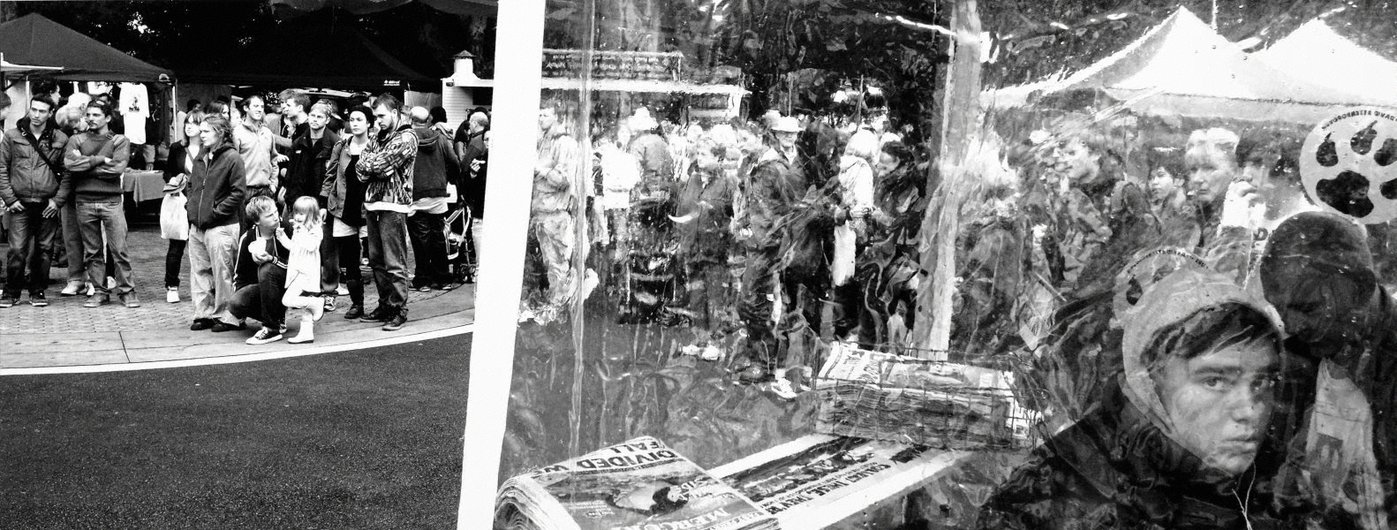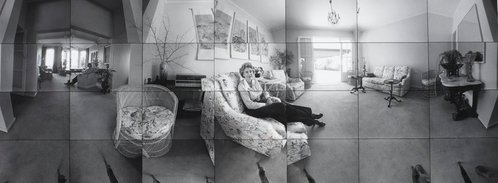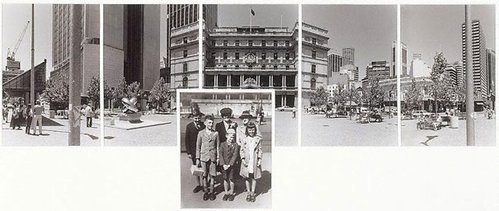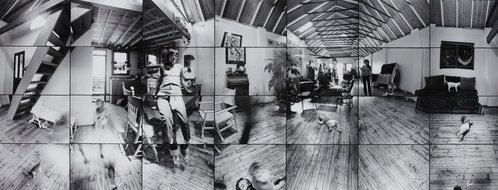-
Details
- Date
- 2012
- Media category
- Photograph
- Materials used
- inkjet print
- Edition
- uneditioned
- Dimensions
- 26.7 x 69.3 cm
- Signature & date
Signed and dated l.r. verso, black pen "J Williams '13".
- Credit
- Gift of John F Williams 2013
- Location
- Not on display
- Accession number
- 65.2013.2
- Copyright
- © John F Williams
- Artist information
-
John F Williams
Works in the collection
- Share
-
-
About
‘History can never be absolute fact, any more than photography tells truths or simply describes facts. The best the individual photographer/historian can hope for is to choose and interpret aspects of time and place. In their turn, the viewer-reader brings to the image-text their own histories of accumulated beliefs and prejudices that enable the possibility of a whole new set of readings and interpretations beyond those imagined by the author.’ 1
John F Williams was inspired by Henri Cartier-Bresson and the photojournalist W Eugene Smith, amongst other major post War photojournalists and documentarians. Reflections and mirrors are recurring motifs in his work, often used to abstract reality in layers of form. His work has developed techniques for recognising the passage of time in photography, including photographic series and photomontage.
This is the case in the two photographs from ‘Street work’, ‘Hobart markets’ and ‘George St (Sydney)’, which also continue the long trajectory in Williams’ work of capturing the city around him. This often occurs without those he photographs being aware, in order to observe nuances in human habits and point to the behavioural norms we take for granted. Williams often approaches this task in an amusing way, as with ‘George St (Sydney)’ where the models in the background advertisement seem also to be waiting with the men standing on the street. In ‘Hobart markets’ a young man has clearly just glimpsed the photographer and stares straight into the camera. Yet his gaze seems to reinforce the ordinariness of the scene behind him rather then add gravitas to the young man’s own position. He is wholly ‘in’ the scene, indeed shielded from Williams himself, and us, by a clear plastic tent that occupies over half the image; Williams gives the impression of looking into a human fish-bowl.
The series ‘Traces’ aims to depict ‘how society chooses to remember, mourn, commemorate (or even celebrate) war itself.’2 Because World War I locations such as Verdun and Oradour sur Glane are highly visited tourist attractions, it was a challenge for Williams to capture the photographs without any people in them. To achieve this, each of the ‘Traces’ images comprises between 20 and 24 vertical pictures, merged subsequently by digital means. By using this technique, Williams was able to wait until the people had moved from each part of the panoramic view he was seeking.
Williams has noted how the resulting images are in fact nonexistent, he describes: ‘by this means I was able to recreate an image, not of what I saw but of what I wanted to see. Without tourists, I hope the viewer might glean something of the loneliness, emptiness and horror that attaches to sites that have been allowed to rot and decay at their own pace, and compare these with the pomposity and banality of purpose-built monuments striving to make war palatable or grant it quasi-religious meaning.’ 3
1 As quoted by Peel R, ‘Australian postwar photo-documentary’, ‘Photography: Art Gallery of New South Wales Collection’ (ed Annear J), AGNSW, Sydney 2007, p 195
2 John F Williams in correspondence with Judy Annear.
3 Ibid.




